Seville is one of those cities that seduces you right from the start with its intoxicating aromas of orange trees, winding medieval lanes, Moorish palaces and baroque churches. It also makes an easy day trip from Malaga, Cordoba, and some other cities in Andalusia. Out of the many free things to do here, visiting the majestic Cathedral of Seville is undoubtedly the most rewarding one.
The Cathedral of Seville is the biggest and most spectacular churches in Spain, followed by the one in Toledo. Cervantes, the creator of Don Quixote de la Mancha, once said the famous phrase: “If you haven’t seen the Seville Cathedral, you haven’t seen a marvel!“
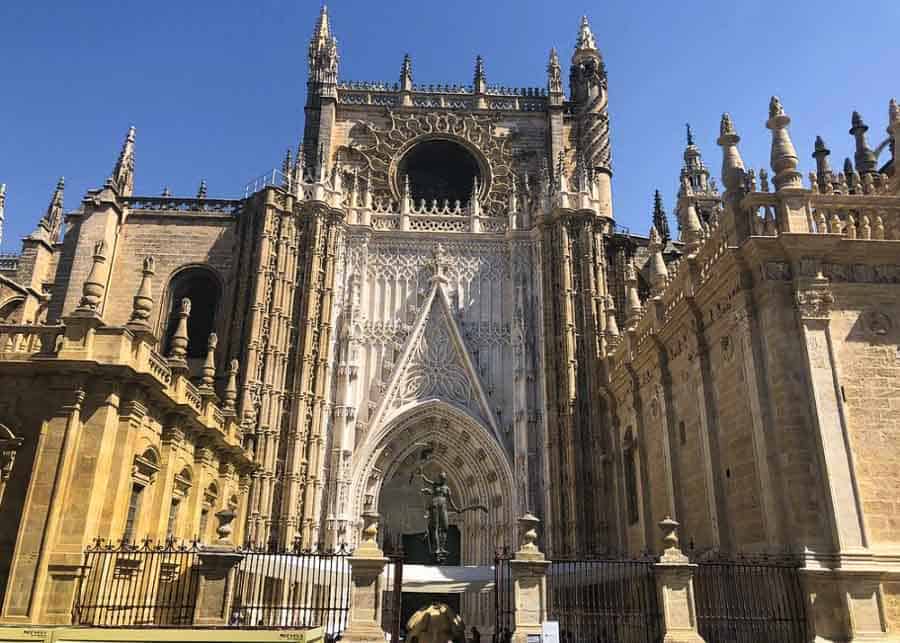
READ NEXT: Best Things to Do in Seville
Table of Contents
A Brief History of the Cathedral of Seville
The cathedral’s construction started in 1401 after the Christians reconquered Seville. The rulers of Seville chose to build the cathedral on the site of a 12th century mosque which suffered serious damages after an earthquake.
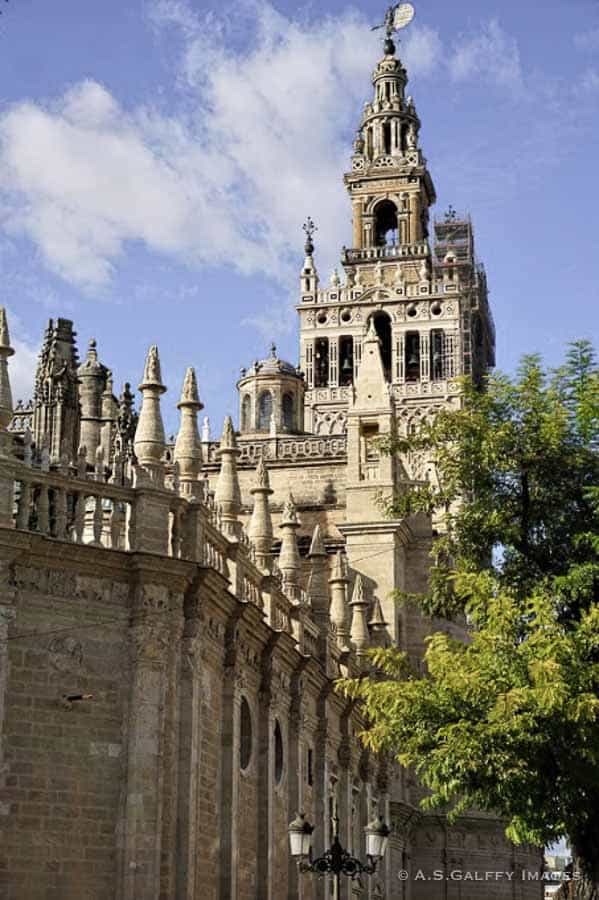
But the real reason for building the cathedral on this site was to demonstrate the city’s wealth and power as well as the Christian’s domination over the Muslims.
When the cathedral of Seville was still in the planning stages, one of the church elders said: “Let us build a church so beautiful and so magnificent that those who see it finished will think we are mad.” And indeed they did! We visited many amazing churches and cathedrals over the years, but none as magnificent as the Cathedral of Seville.
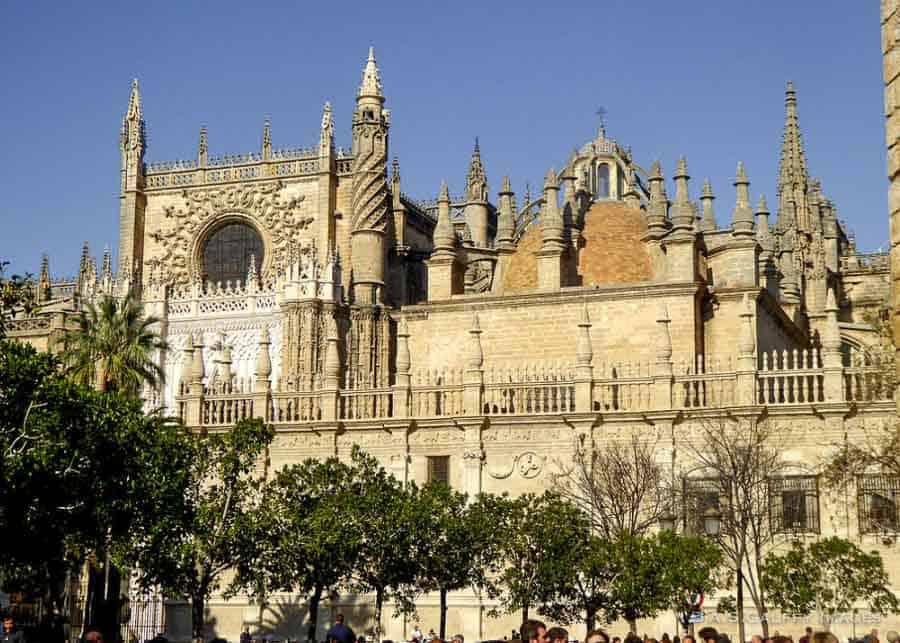
After over 100 years of construction, the final result was pretty much the cathedral we see today. Some elements of the original mosque were incorporated in the cathedral: the courtyard (Patio de los Naranjos) and a minaret, which was later modified into the current Giralda Bell Tower.
READ NEXT: Parador de Jaen: How to Stay in a Castle in Spain
Visiting the Cathedral of Seville
The first thing that will amaze you when visiting the Cathedral of Seville is its awe-inspiring size. Its central nave rises to 42 meters and covers an area of 11,520 square meters. There are in all 80 side chapels, each tall enough to contain an ordinary church.
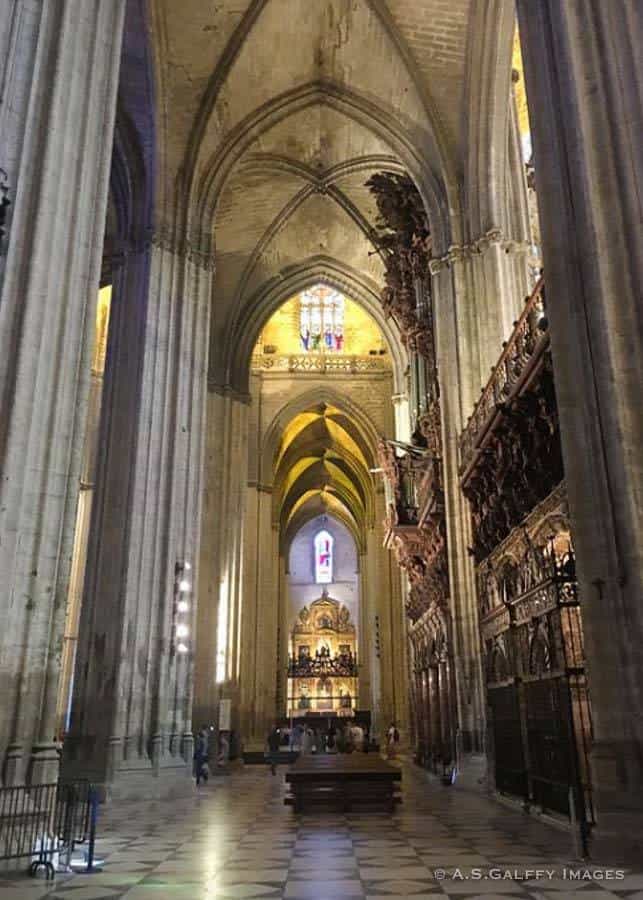
According to some new calculations, the Cathedral of Seville is actually the biggest church in the world. It is bigger than St Peter’s in Rome and even bigger than the Catedral Metropolitana in Brazil. However, that is still a subject for debate.

The second thing that will amaze you is the Cathedral’s overall simplicity and restraint in decoration. The interior of the cathedral has a central nave and four side aisles, all beautifully decorated. Gold is everywhere. But at the same time, there is an overall sense of moderation and simplicity in the decoration.
READ NEXT: Staying at Parador de Carmona – a Fortress as Your Home
What You Shouldn’t Miss When Visiting the Cathedral of Seville
Capilla Mayor (the Great Chapel)
Of the 80 Chapels in the cathedral, two will probably catch your eye: Capilla Mayor and Capilla Real.
The most beautiful one is Capilla Mayor or the Great Chapel, home to It is the largest and richest altarpiece in the world. The impressive 20-meter high altarpiece features scenes from the life of Christ, carved in wood and covered with an impressive amount of gold.
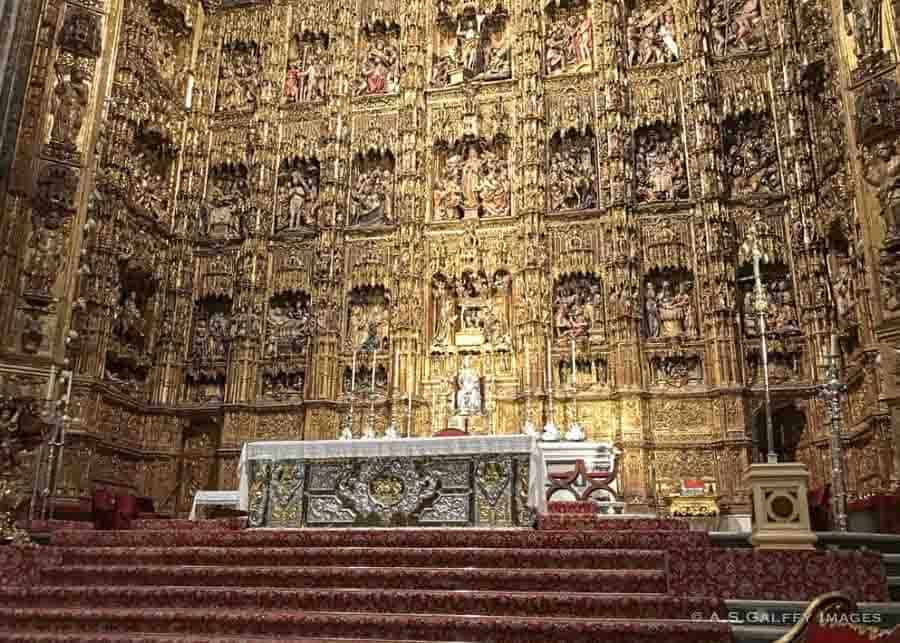
This marvelous piece was the work of a single craftsman, a Flemish artist, who hand-carved each of the 45 panels over a period of 44 years. The result is absolutely incredible!
Capilla Real (the Royal Chapel)
The other chapel not to miss is the Capilla Real or the Royal Chapel, built in the 16th century. This lavishly decorated domed chapel was erected as a burial place for the Castilian monarchs.
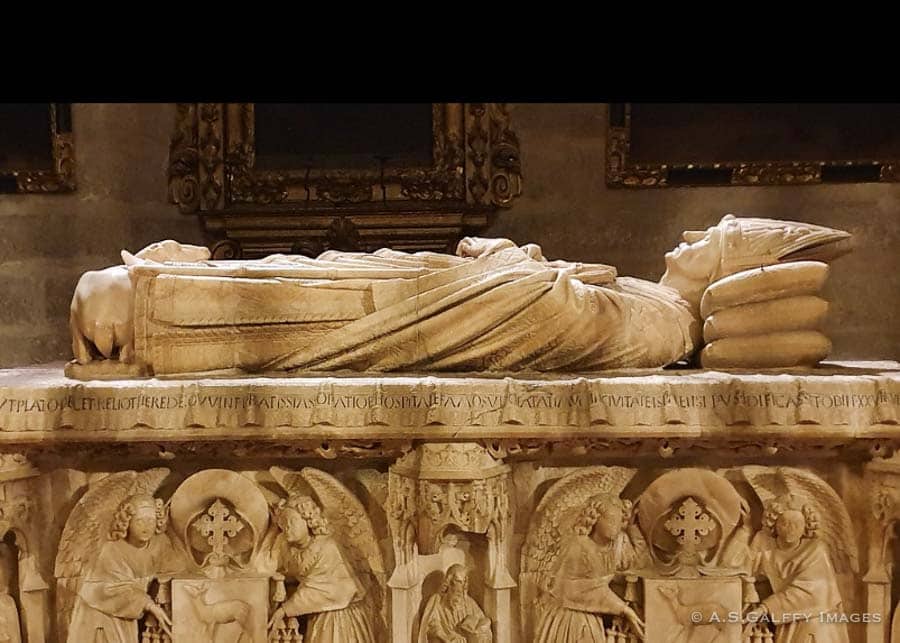
There are many royal tombs in the chapel as well as in the crypt below, including the one of King Ferdinand III, his son Alfonso X the Wise, and King Peter of Castile.
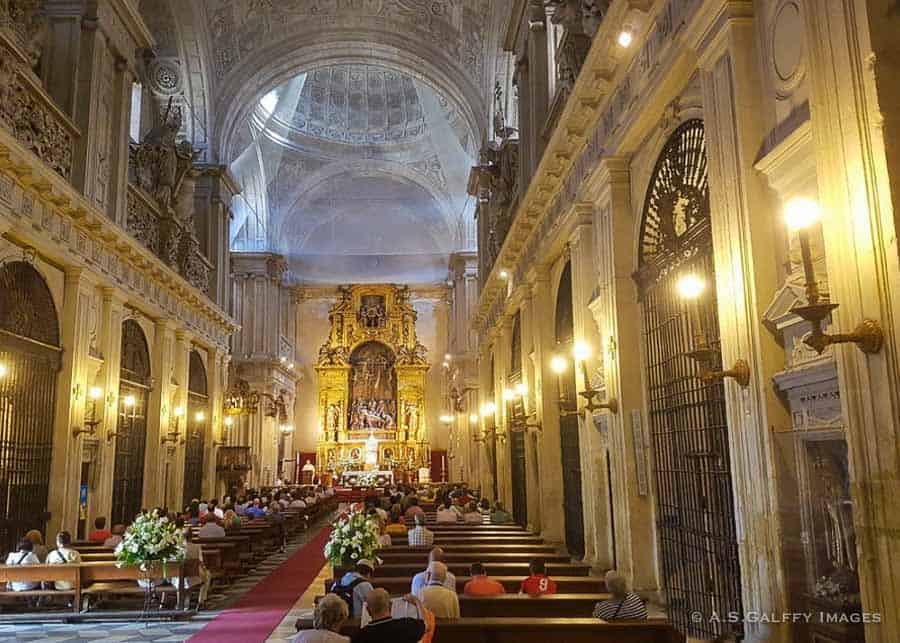
Christopher Columbus’ Tomb
Just off the center of the nave, stands the monumental tomb of Christopher Columbus (Cristóbal Colón) designed by the sculptor Arturo Melida.The tomb is held up high by four allegorical figures representing the four kingdoms of Spain during Columbus’ life, Castille, Aragon, Navarre and Leon.
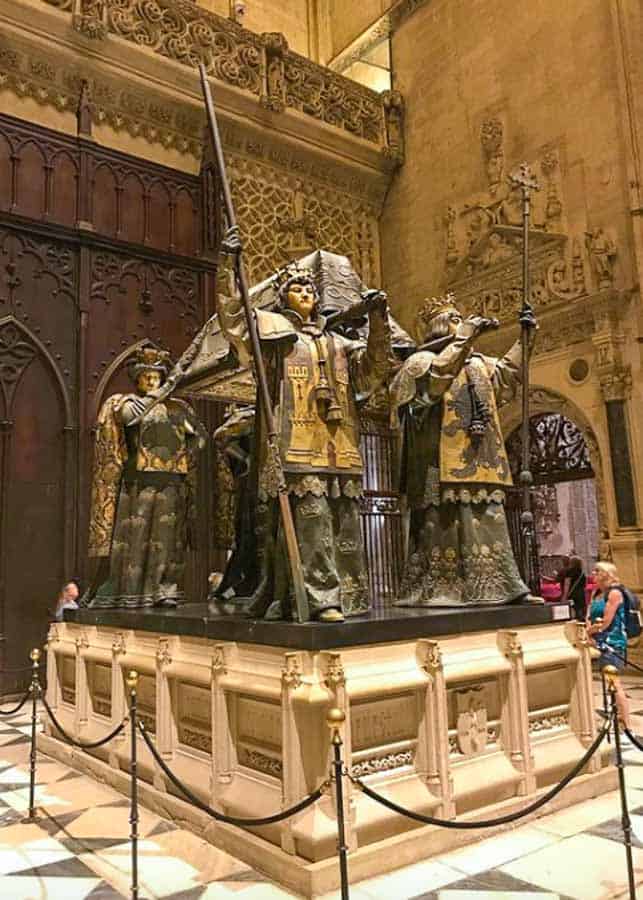
Columbus was originally buried in the cathedral of Havana, on the island he had discovered on his first voyage in 1492, but was moved to Seville in 1902 during the Cuban revolution.
The authenticity of his remains were largely disputed, but the DNA tests done in 2006 confirmed that the tomb in the Cathedral of Seville are indeed those of the great explorer.
The Giralda
After visiting the interior of the cathedral, you should climb to the top of the Giralda.
This bell tower was originally the minaret of the mosque. Unlike other cathedrals, the climb is not up a long winding staircase. Getting to the top of the Giralda is easy because you don’t have to climb any stairs.
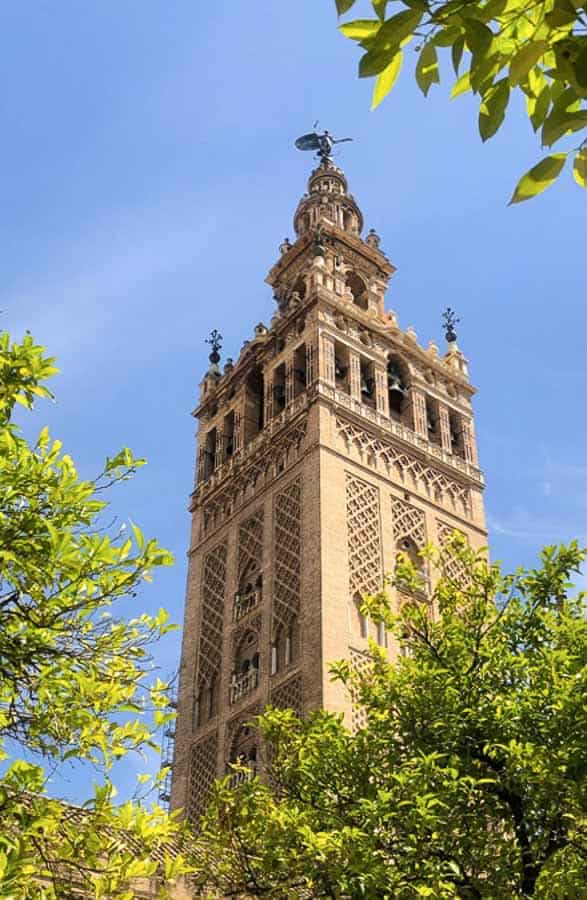
There is a series of ramps that lead to the top, with plenty of alcove windows along the way. You can stop to take some great pictures of the town below. But the best views await you at the top.
Patio de Naranjos
After visiting the Giralda, head to the Patio de Naranjos, a large courtyard contained within the cathedral boundaries. This is very similar to the Patio de Naranjos at the Cathedral of Malaga. It’s a nice place to relax. And if you are visiting the Cathedral of Seville when the orange trees are in bloom, you won’t believe the smell in this garden!
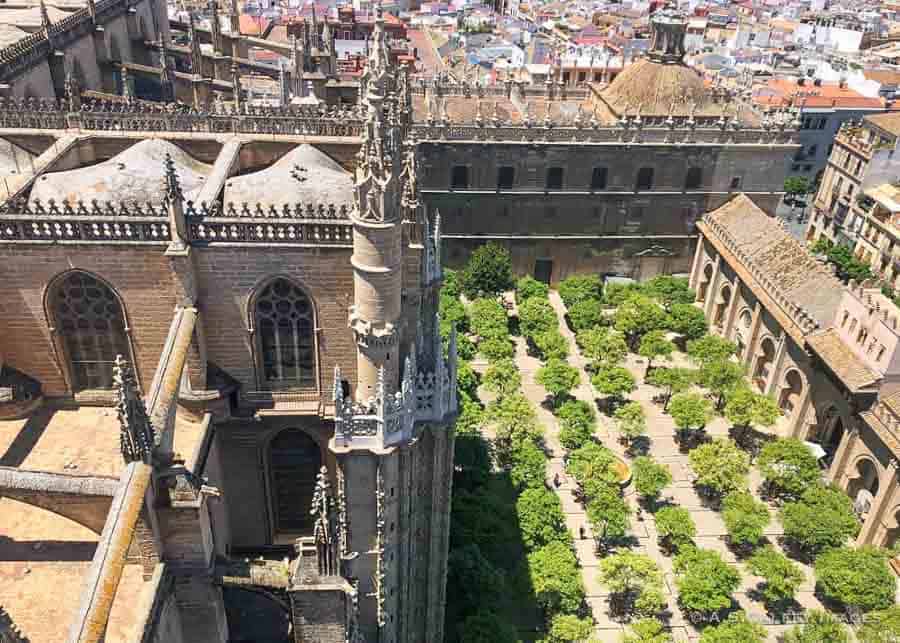
The patio dates back to Moorish times when worshippers used it to wash their hands and feet in the fountains here before getting into the mosque, to pray.
READ NEXT: How to Spend a Perfect Day in Malaga
How to Buy Tickets for the Cathedral
• General Admission Tickets (€8) can be bought online, from their official website. These tickets will give you access the Cathedral and the Giralda. However, they don’t have the skip-the-line option for entering the attractions.
• Skip-the-Line Tickets are fast track tickets that allow you to skip the line and avoid the queues, which can be quite long. These tickets will give you access to the Cathedral and the Giralda.
• Skip the Line Tickets With Guided Tour is one of my personal favorites. When visiting the Cathedral of Seville is important to get some good insight about it. With this tour you will not only skip the lines, but also enrich your experience with some interesting stories about the Cathedral.
If you found this information useful, please pin it for later:


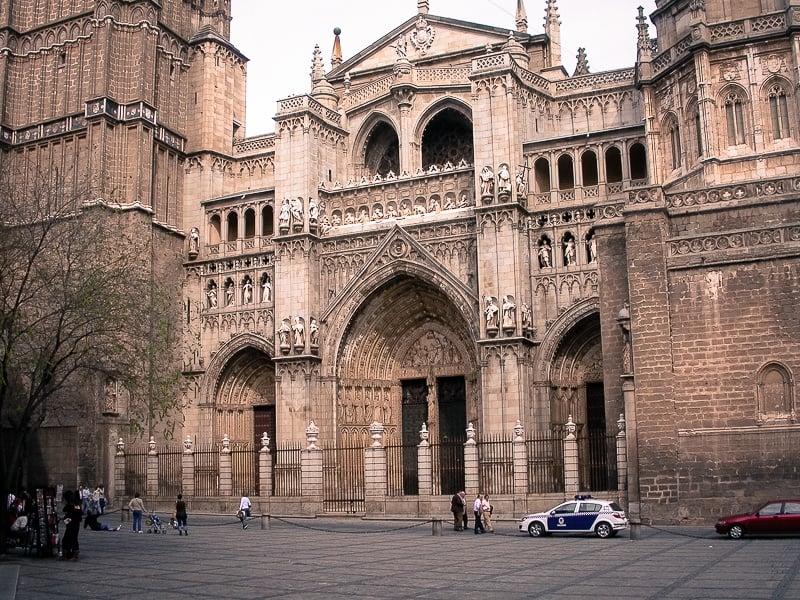
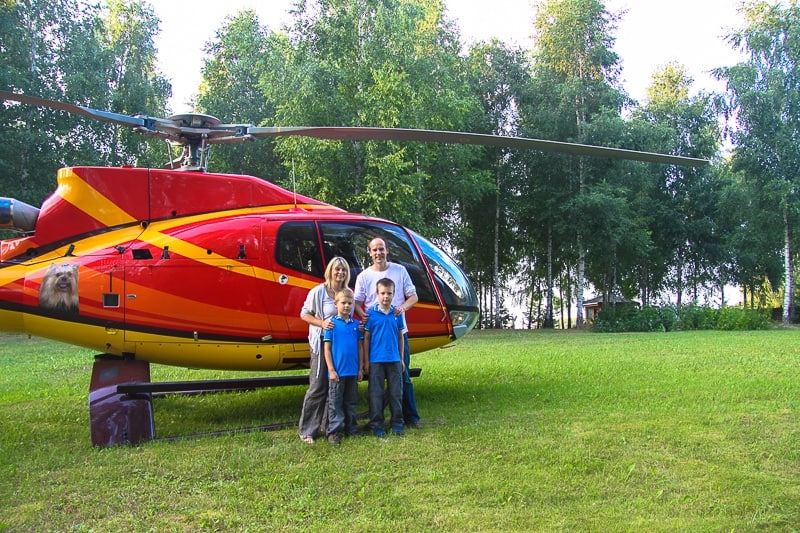 Interview with Paul Johnson, the Editor of A Luxury Travel Blog
Interview with Paul Johnson, the Editor of A Luxury Travel Blog



Ankit Acharya
Thanks for sharing such a great article on Seville. I really loved the Giralda, beautiful buildings and their beautiful pictures. I will moving forward to visit these places. Thanks again for sharing this amazing article with us.
Kristi
Wow – what an amazing cathedral! I love visiting cathedrals during my travels. I can’t wait to visit Spain myself. Thanks for sharing!
Elaine
Beautiful buildings and beautiful pictures! I’m taking my first trip to mainland Spain later this year and am so excited!
Melodie K.
Great photos, Anda ~ the Catedral de Sevilla is a GRAND building, as you’ve made clear here, and not easy to capture. They’ve made me want to return for another look at the cathedral, the Alcázar, and to taste freshly-made tortas de aceite, a delicious! sweet and crispy flatbread. (Maybe you had some when you were there?)
Anda Galffy
Thank you, Melodie. You are right, the space around the cathedral is relatively narrow, so it’s difficult to take pictures of this marvelous monument.
Anda Galffy
You definitely should visit Seville, Samyia. It will be an unforgettable experience.
Esther
I absolutely loved the Giralda! And I also loved the court yard with all those orange trees. I really have to go back to Sevilla someday, it’s been too long.
Lyn@thetravellinglindfields
It is a magnificent buildings and your photos bring it to life wonderfully. As always your post brings back lovely memories of our holiday in Spain many years ago.